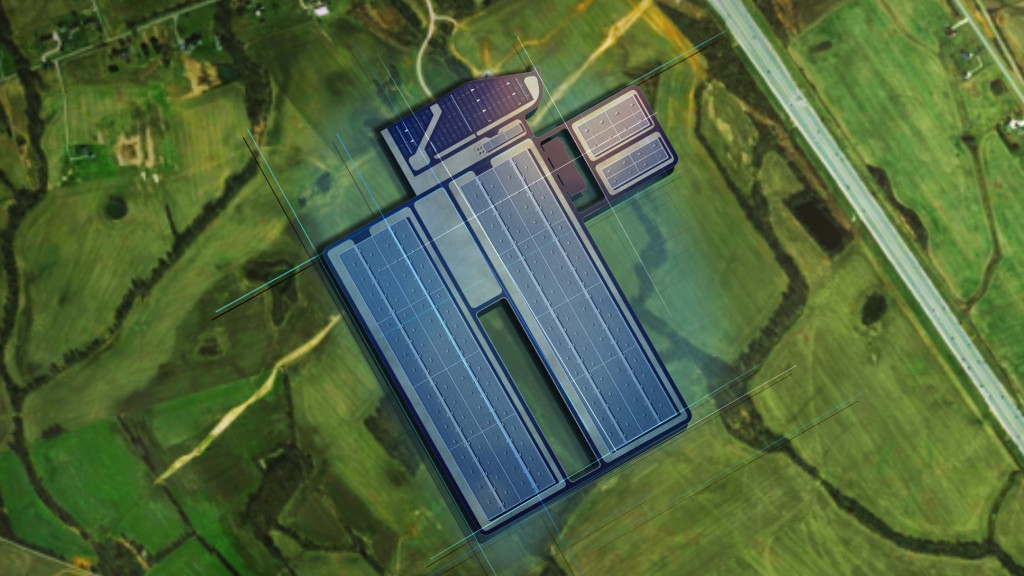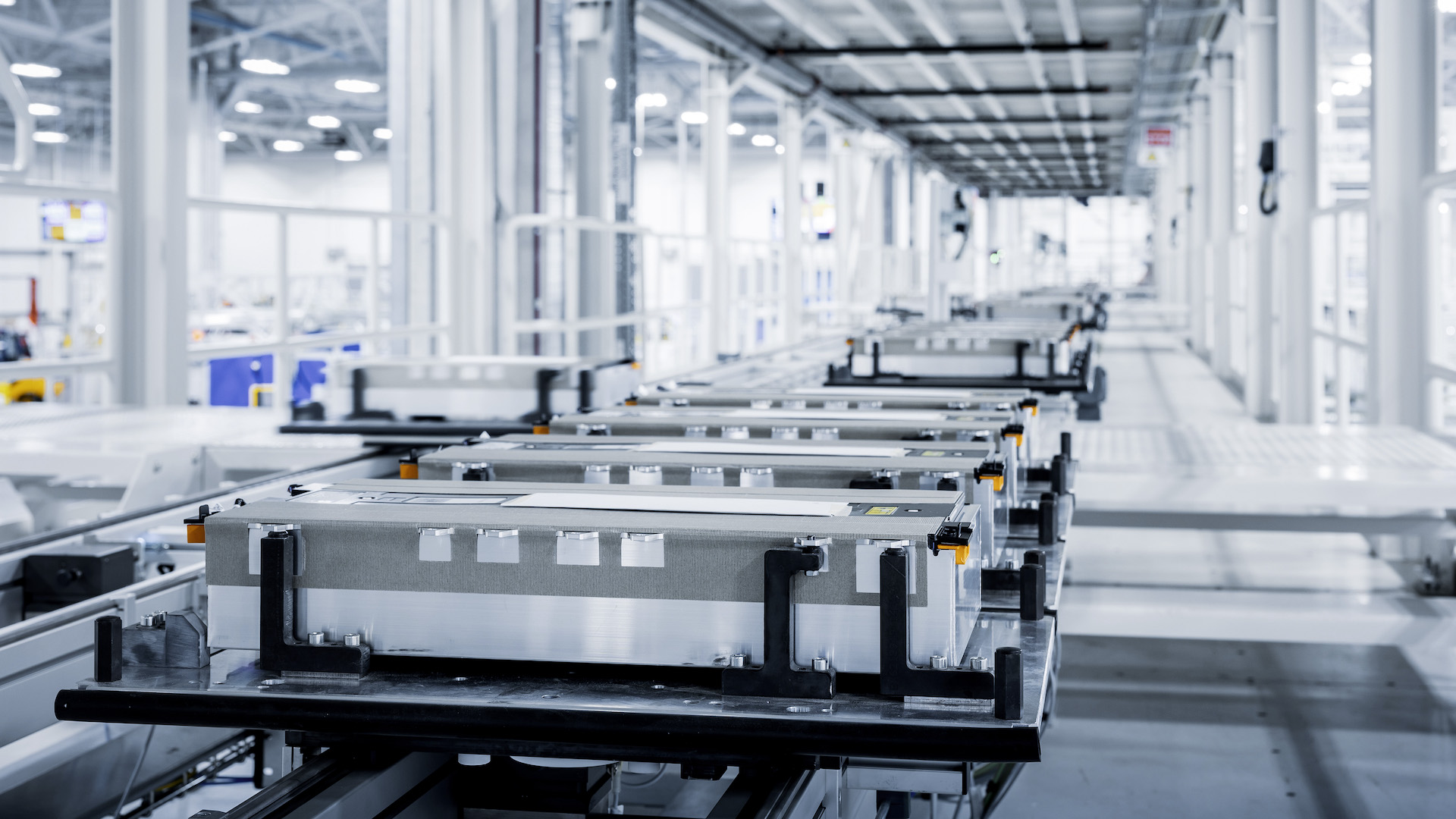The U.S. could produce cheaper EV batteries than China by 2030, according to a new report by analysis firm Benchmark Mineral Intelligence (via Politico). But that depends on Biden administration policies undergirding current battery-manufacturing momentum staying in place.
The cost reductions are dependent on tax credits from the Inflation Reduction Act (IRA), according to the report. The 2022 legislation, which Benchmark notes has already led to a “surge” in battery investments, offers a manufacturing tax credit of up to $35 per kwh for U.S.-produced cells up to 2029.
With tax credits taken into account, the average cost of U.S. battery production at the cell level could fall from $118 per kwh today to $76.8 per kwh in 2029, according to analysts, giving U.S. battery factories the “lowest-cost operations globally”—erasing China’s current cost advantage and perhaps allowing more exports from U.S. plants.
Rendering of planned General Motors Ultium Cells Lansing battery plant
Key to this scenario is whether the incoming Trump administration continues to set aside funds for battery-manufacturing tax credits. The IRA may have created enough jobs to save it from being killed outright, but the administration could use any discretionary power it has under the legislation to hold back battery subsidies. Trump reportedly offering to nix EV incentives for a very large donation from Big Oil during the campaign.
Even with the tax credits intact, achieving cheaper EV batteries in the U.S. faces additional obstacles. Companies may cancel projects if EV demand doesn’t rise as quickly as expected, the report noted. Since the IRA was passed in Aug. 2022, 23 new battery factories have been proposed, which would bring the total number of U.S. battery factories to 40. But over a third of these new projects haven’t begun construction, analysts found.
The average construction time for new battery factories in North America is also 30 months, compared to 20 months for China, according to the report. Unionized workforces and less access to refined battery materials also makes battery production more expensive in the U.S. than in China, analysts said. Some cost reductions are expected once factories are up and running, though.

Ford Blue Oval City – rendering of manufacturing complex in Tennessee, September 2021
Yet the IRA is boosting the financial case for making batteries in the U.S., the report emphasized. LG Energy Solution said earlier this year that IRA tax credits had turned its operating income from a loss of 235 billion won (approximately $180 million at current exchange rates) to a profit of 195 billion won ($138 million) in the second quarter. And Panasonic reported that tax credits increased its earnings margin from 7% to 18% for the fiscal year ending in 2024.
Cheaper batteries make for cheaper cars, which could have a bigger long-term impact on EV adoption than tax credits for vehicle purchases themselves. A recent study by the Stanford Institute for Economic Policy Research (SIEPR) found that, while IRA tax credits have helped lower emissions and boost U.S. manufacturing, they tend to go to people who would have bought an EV anyway and are thus of questionable value.




